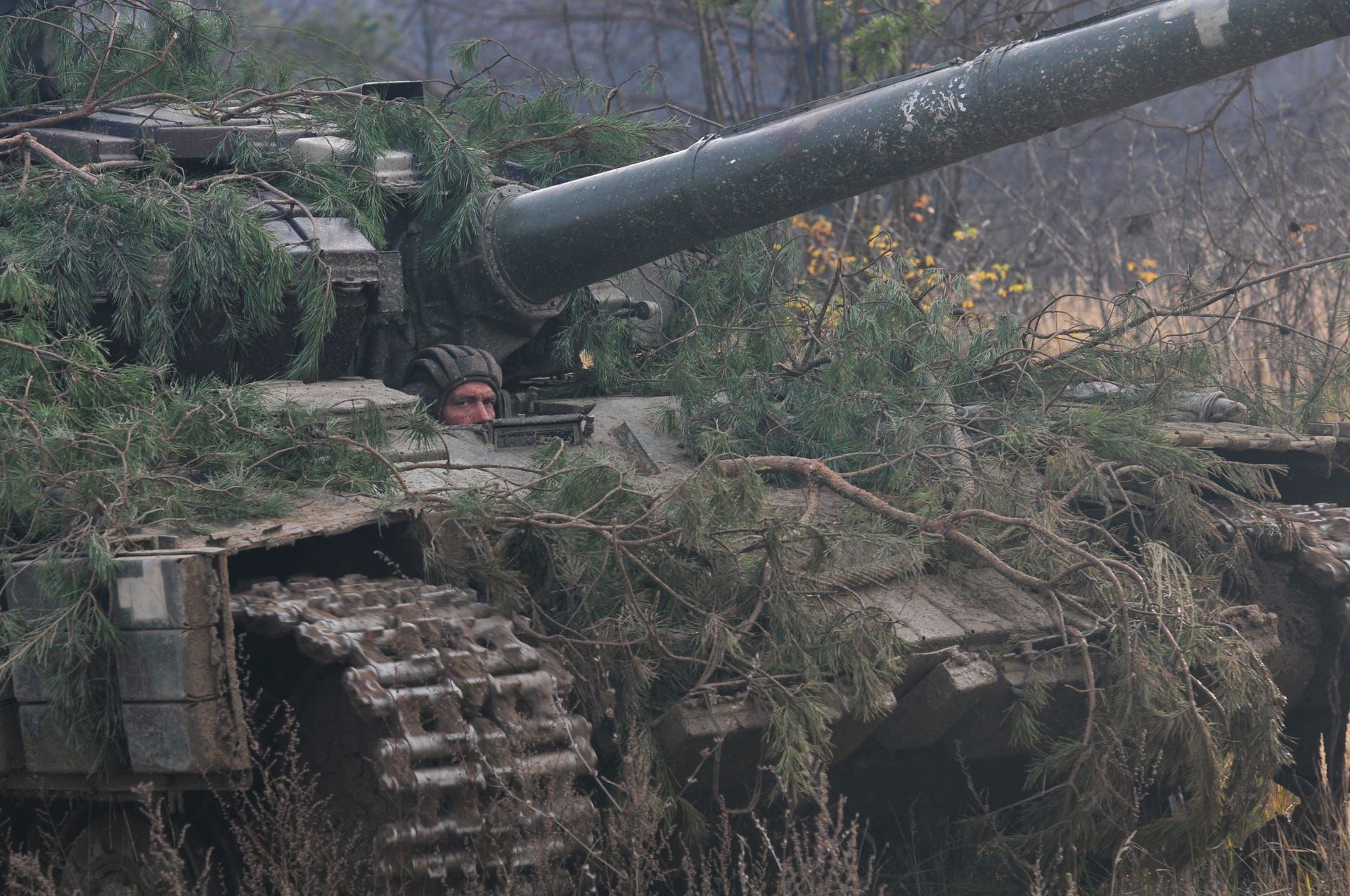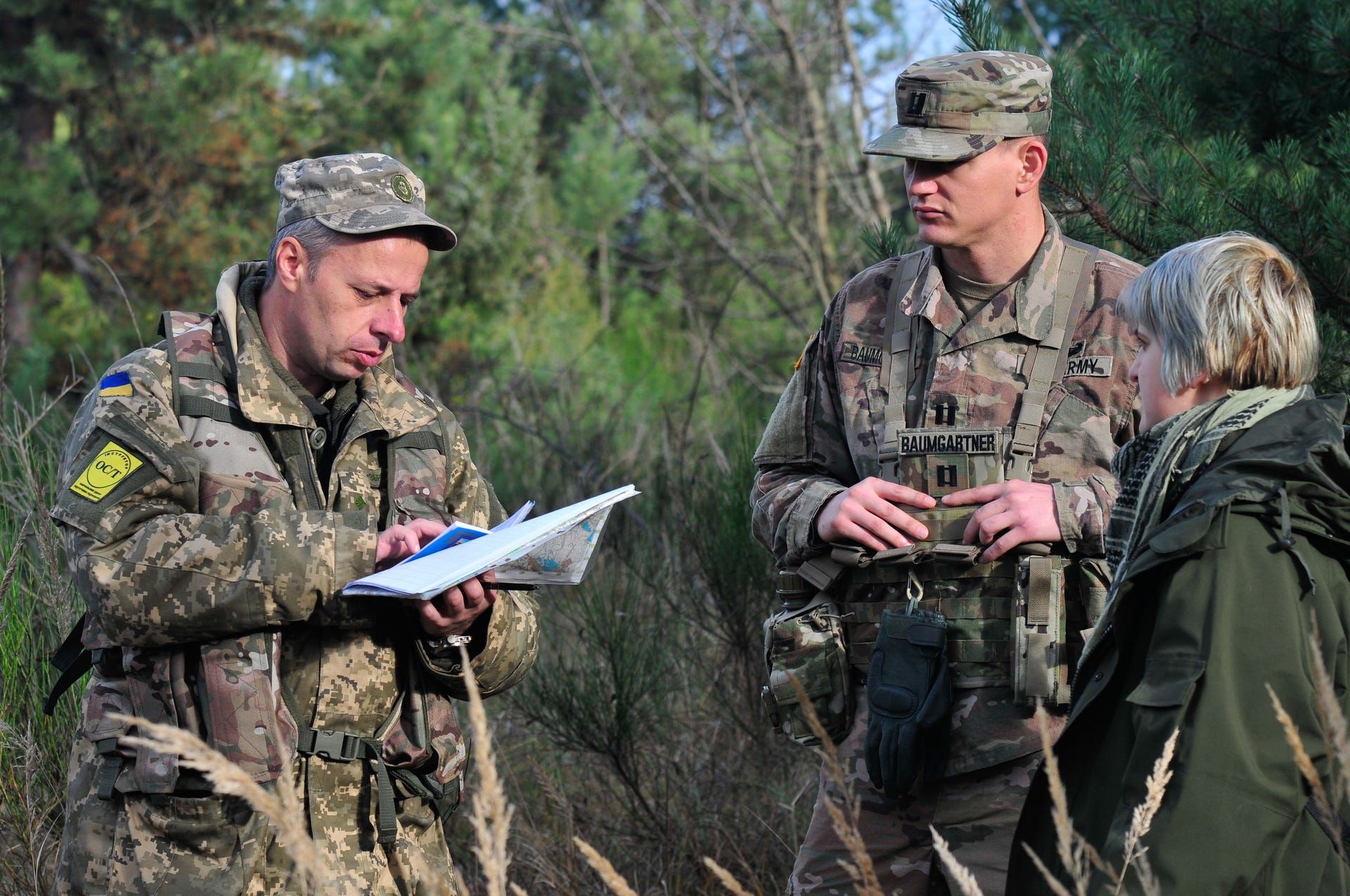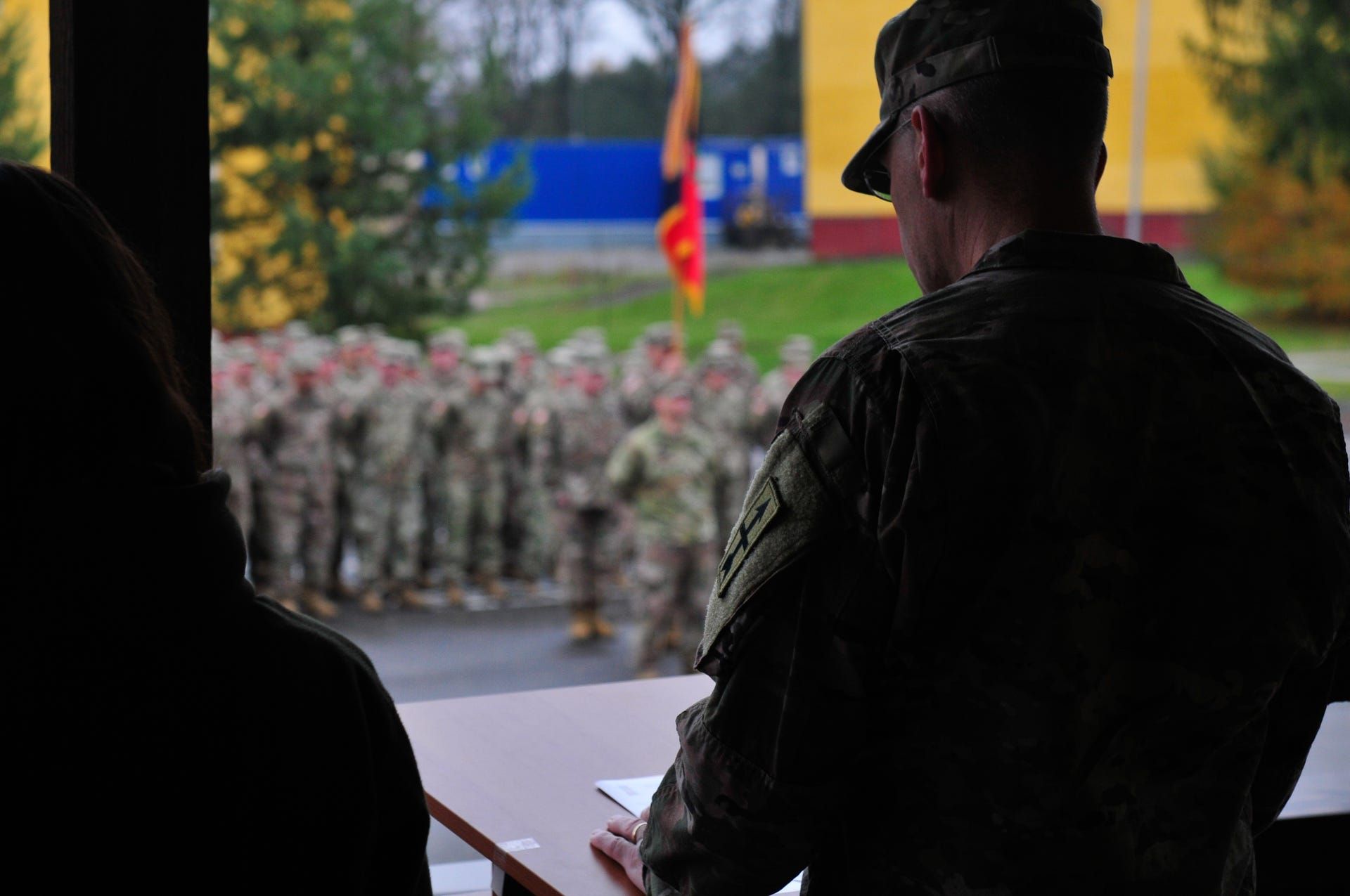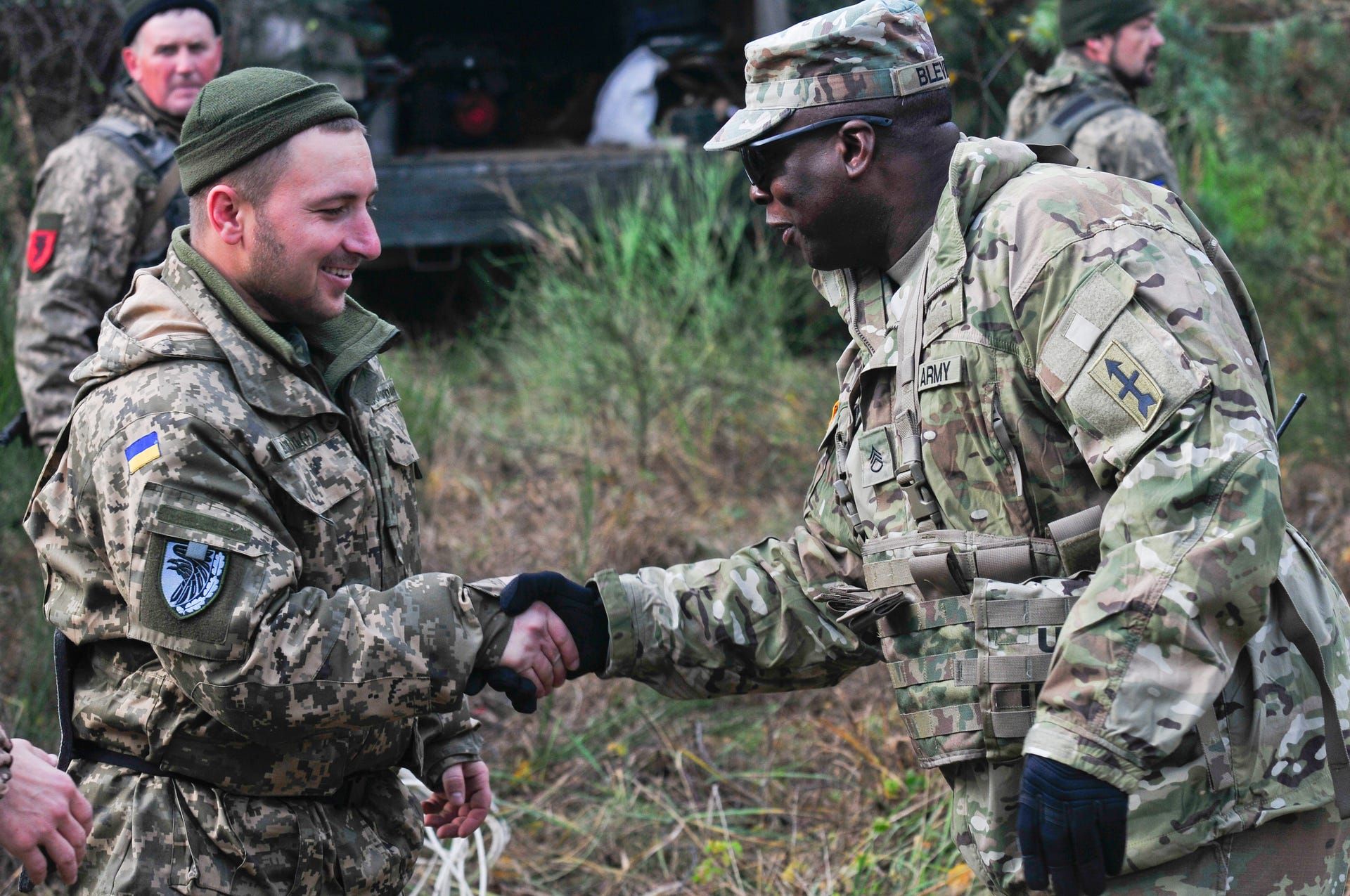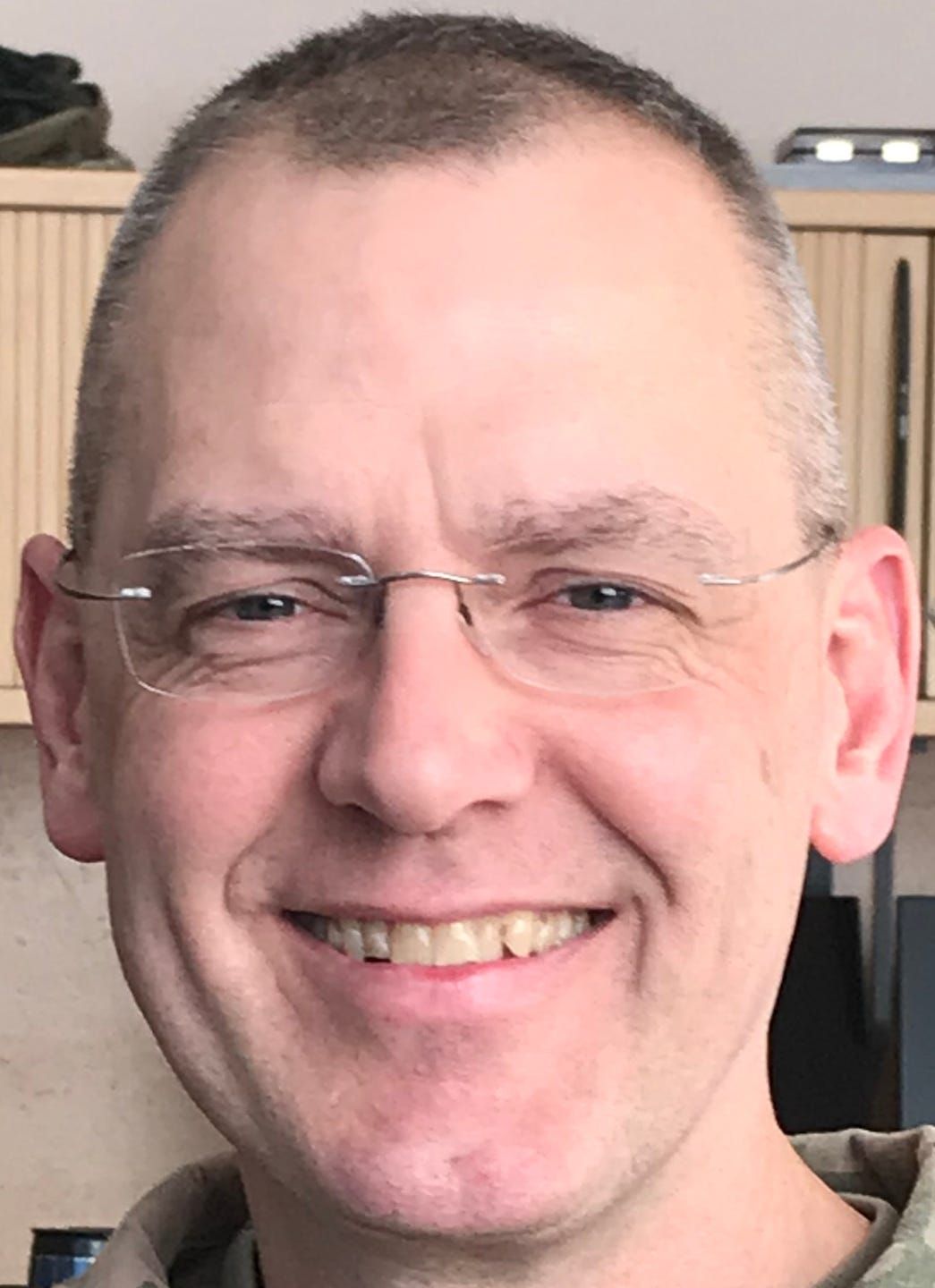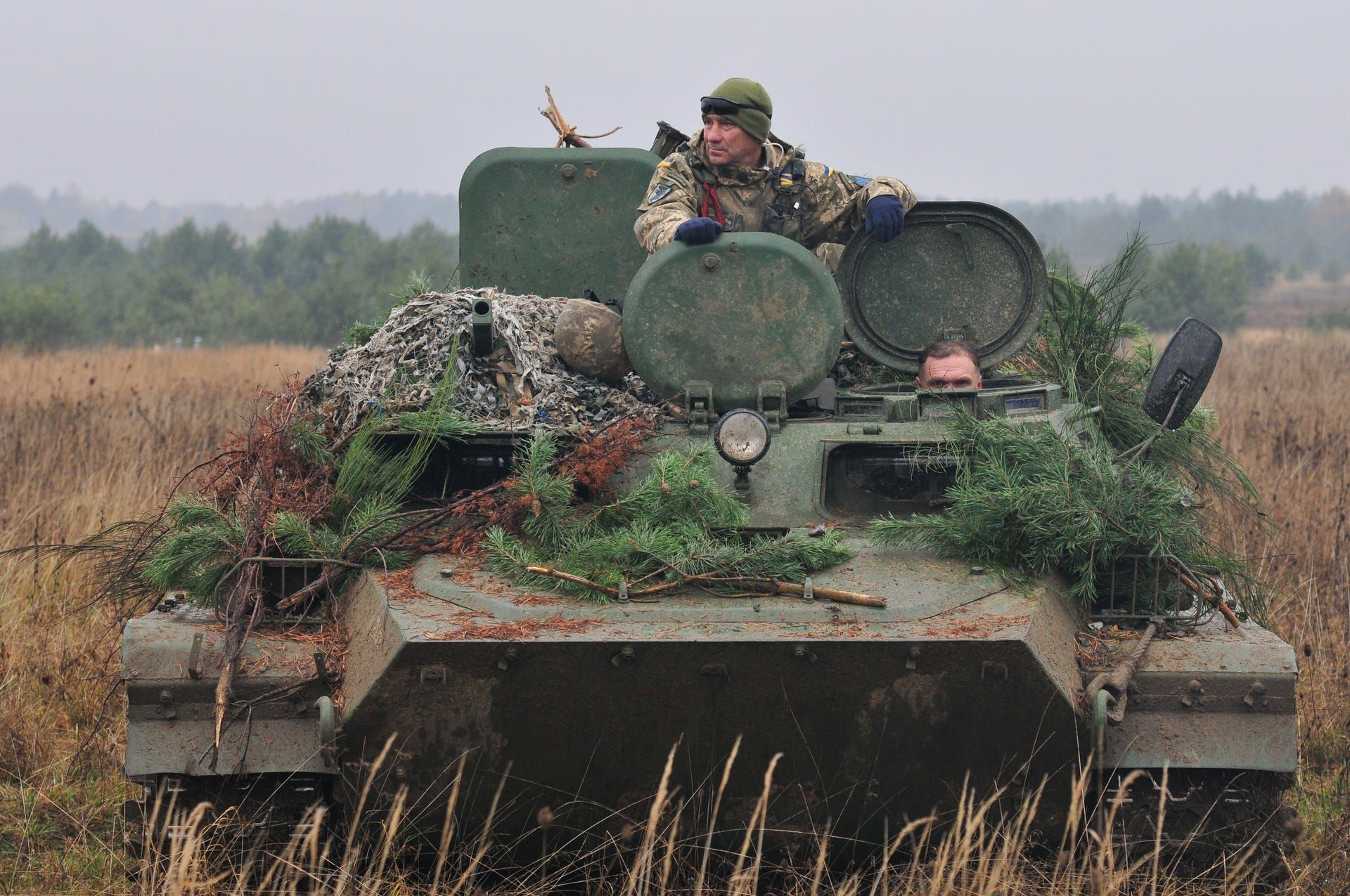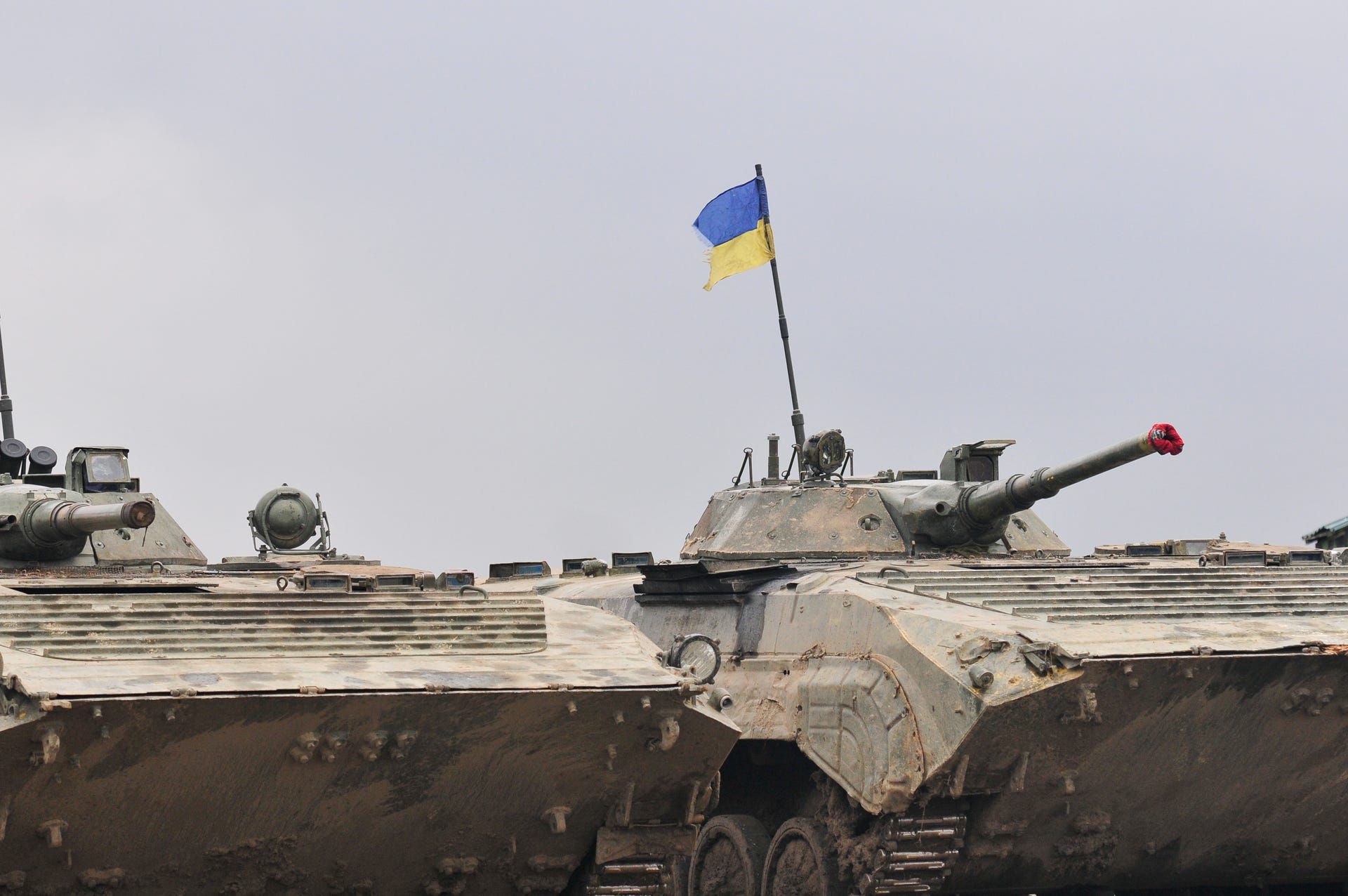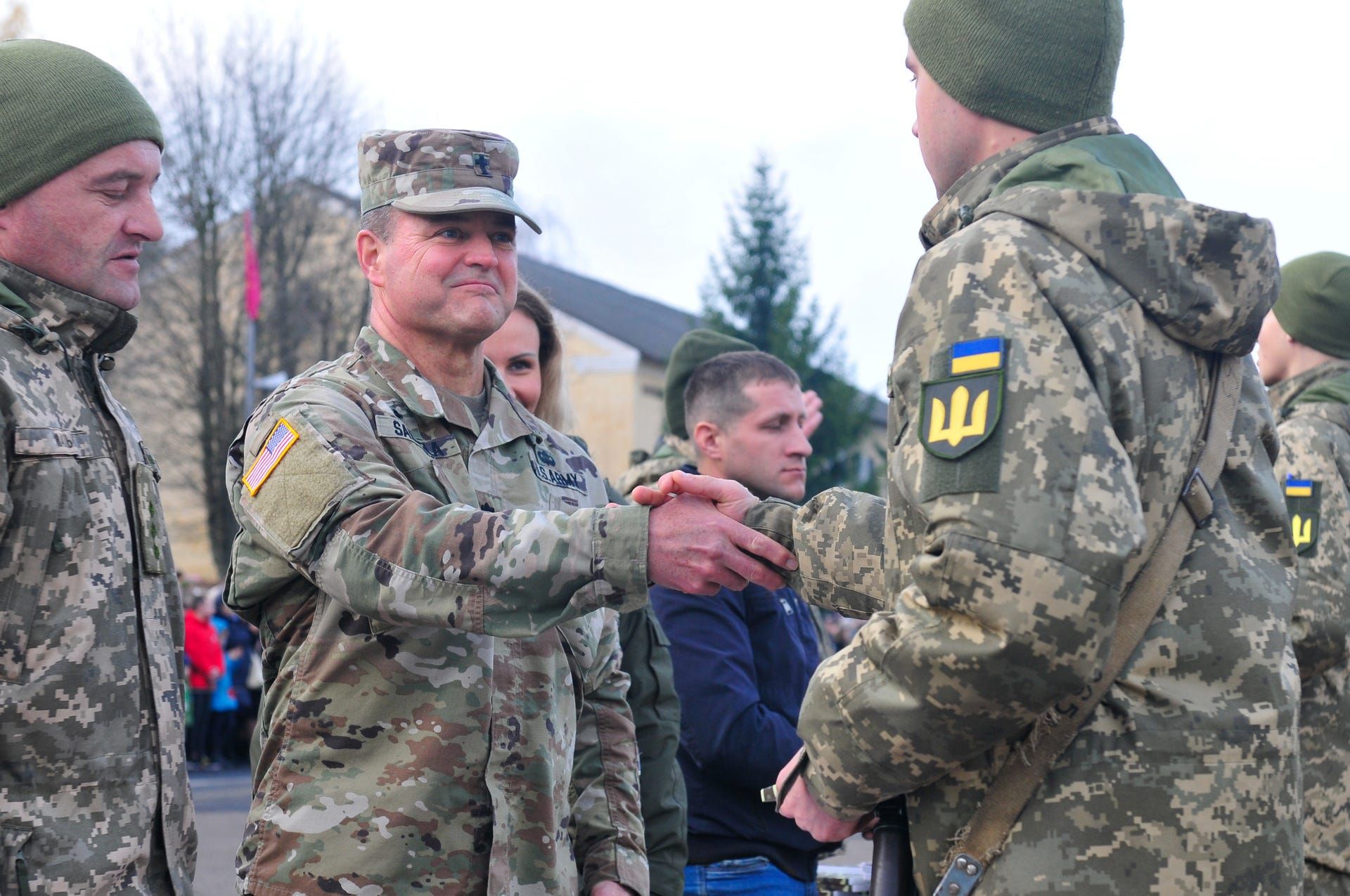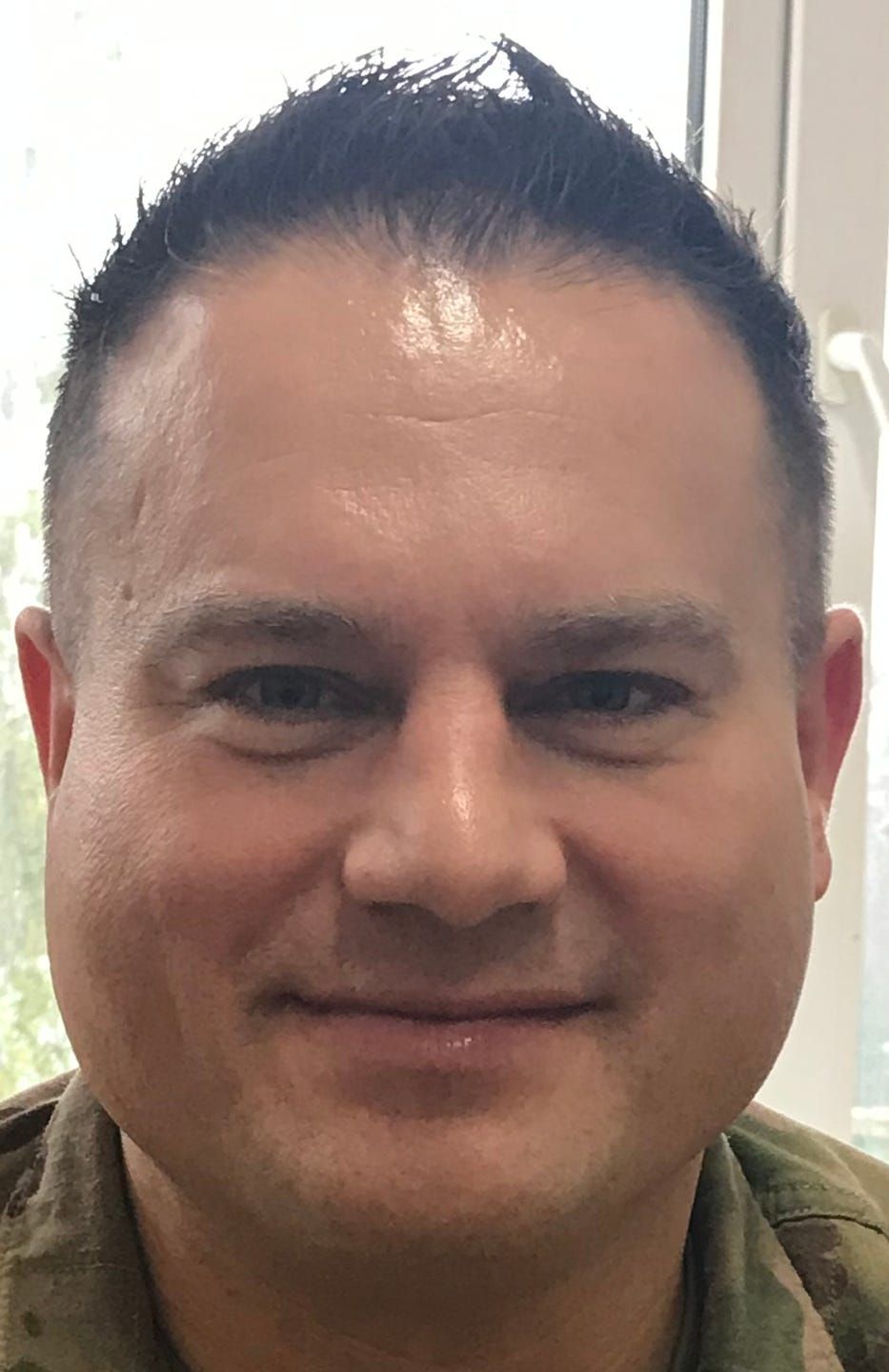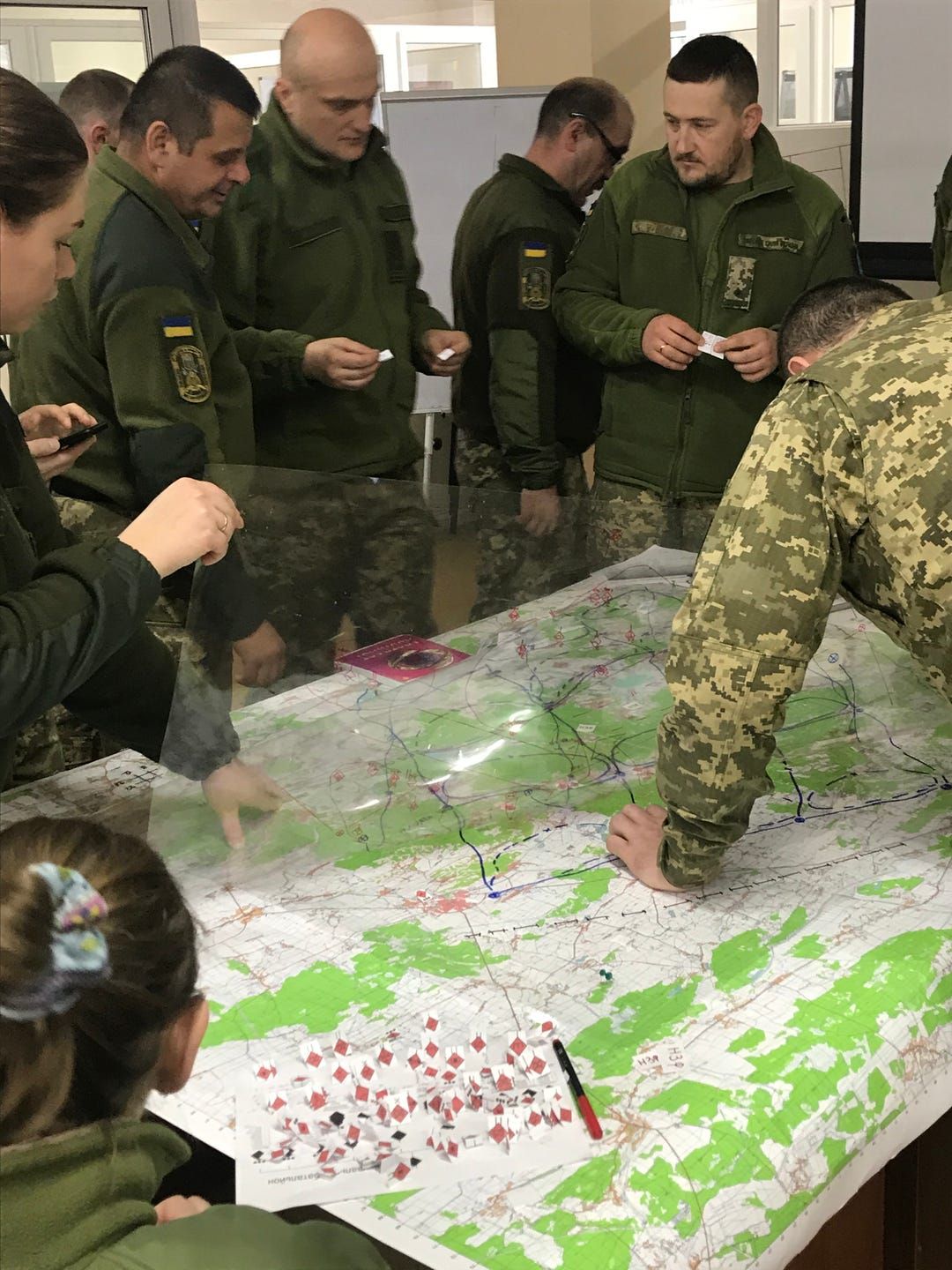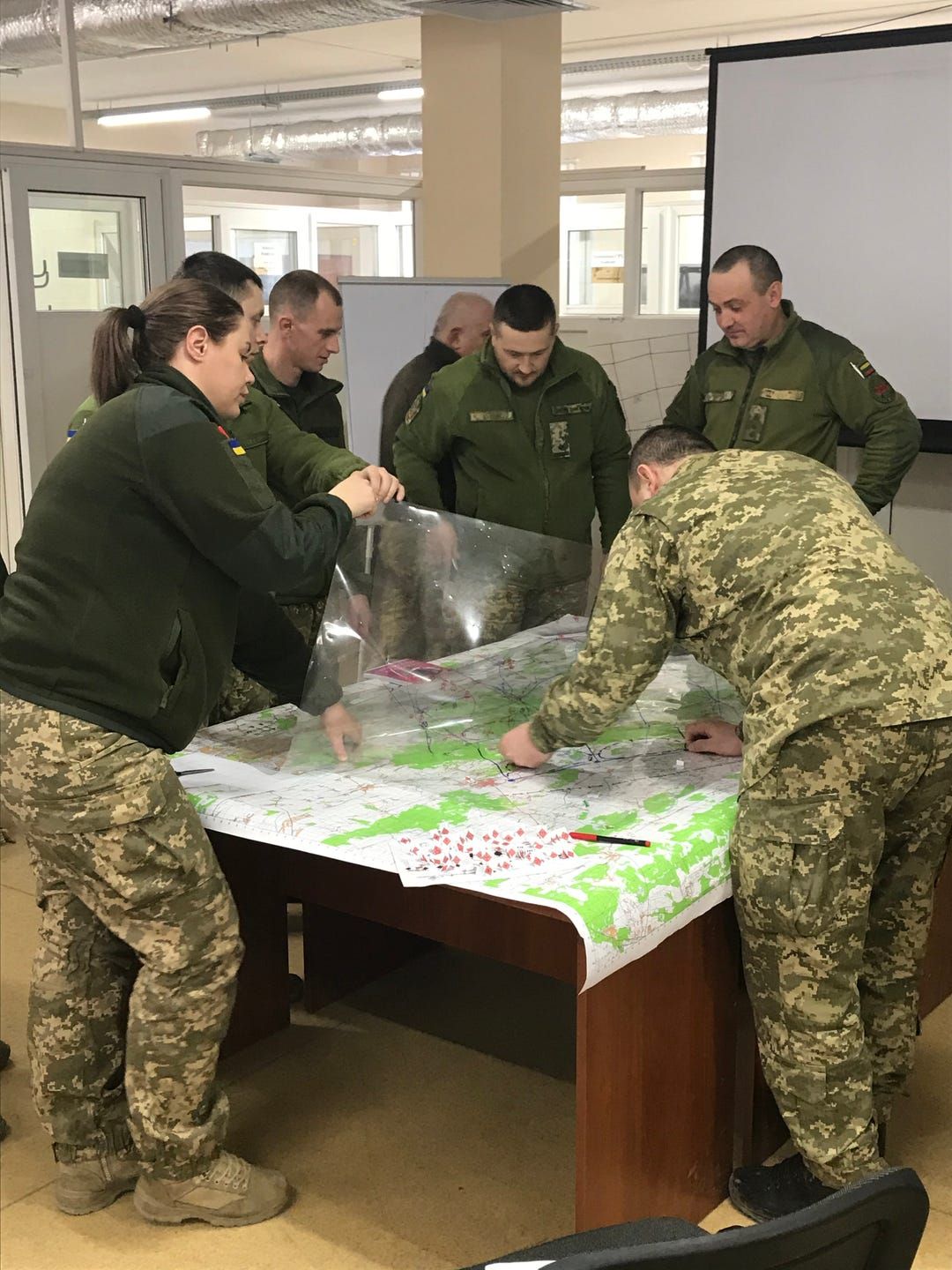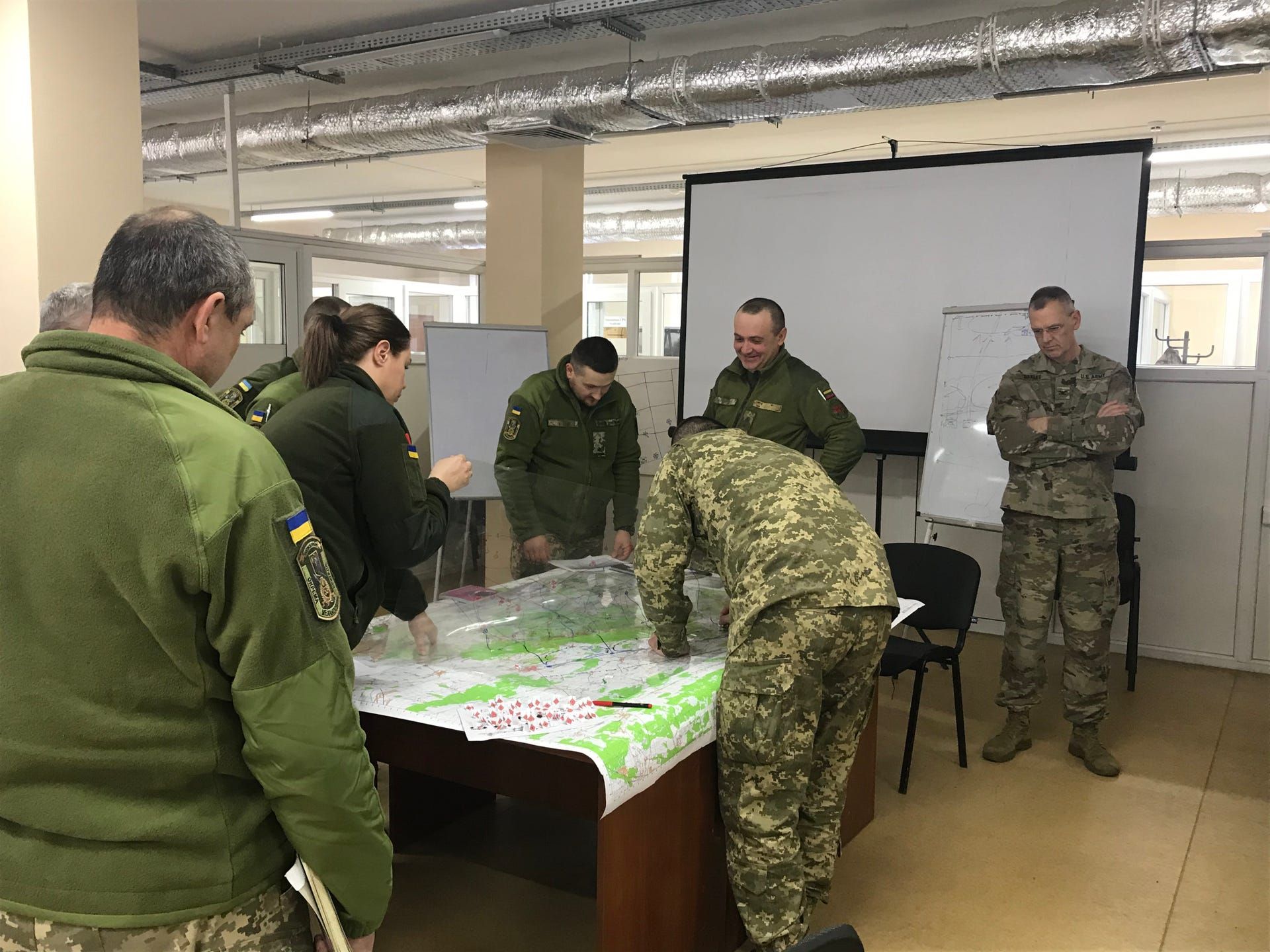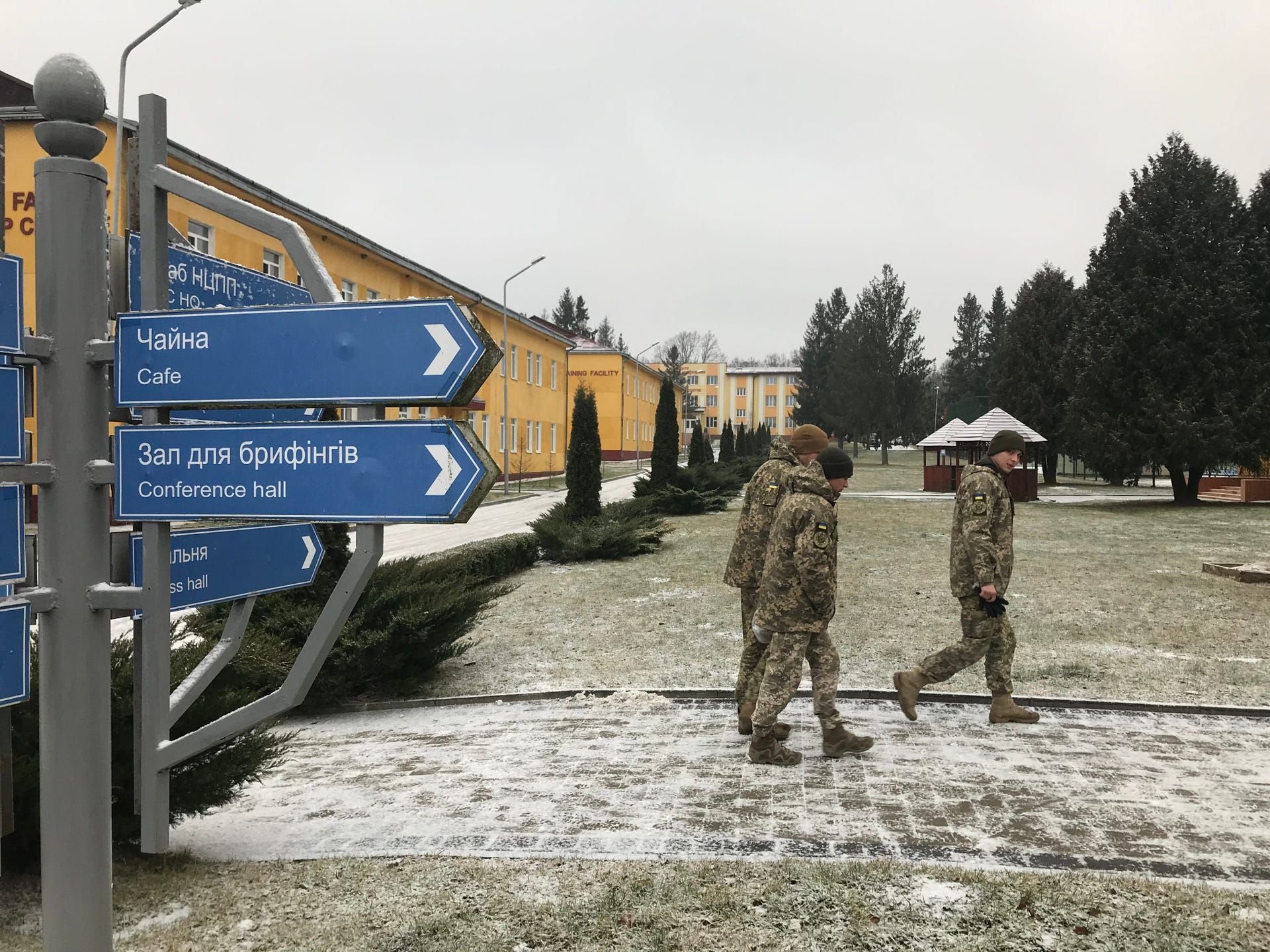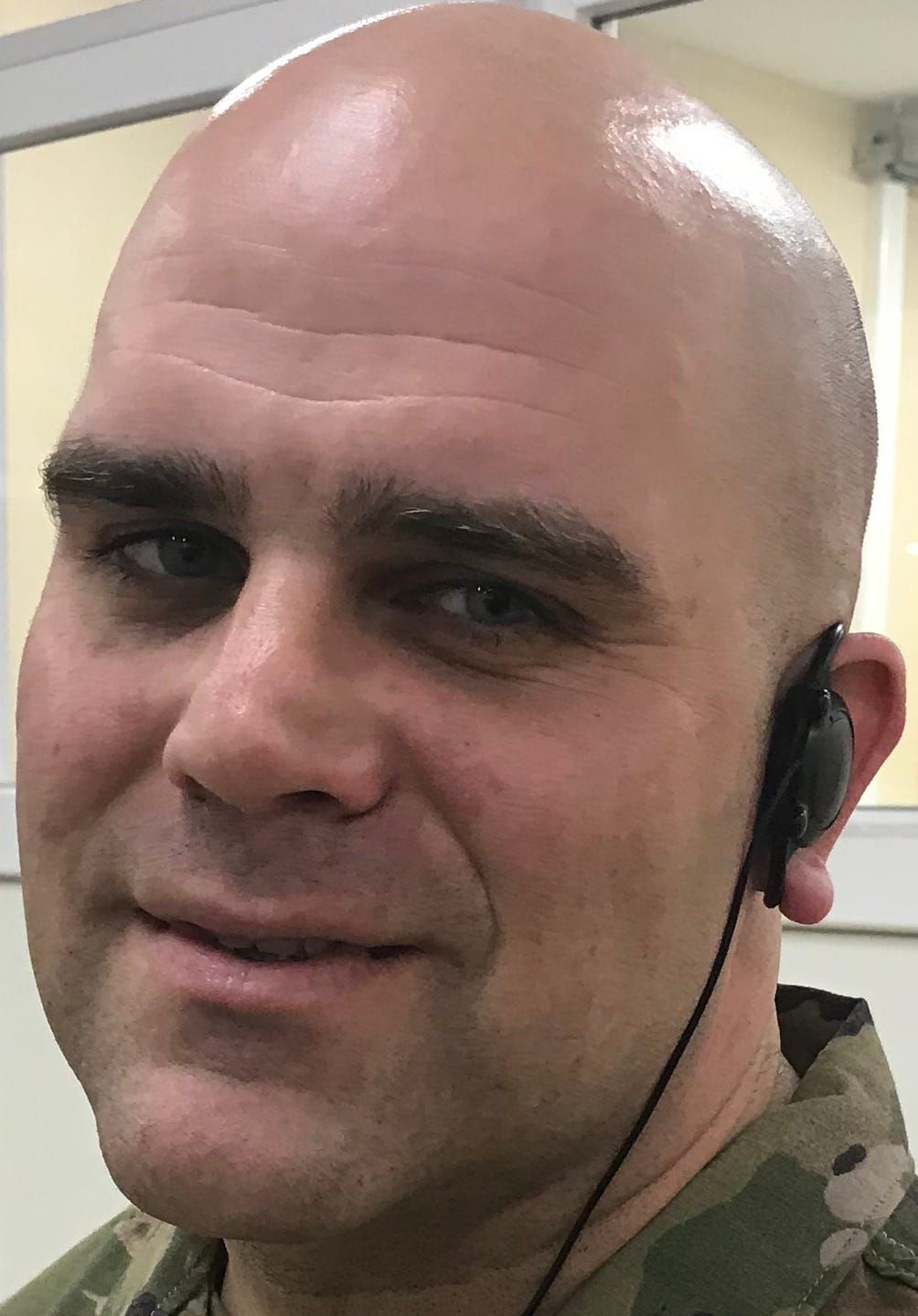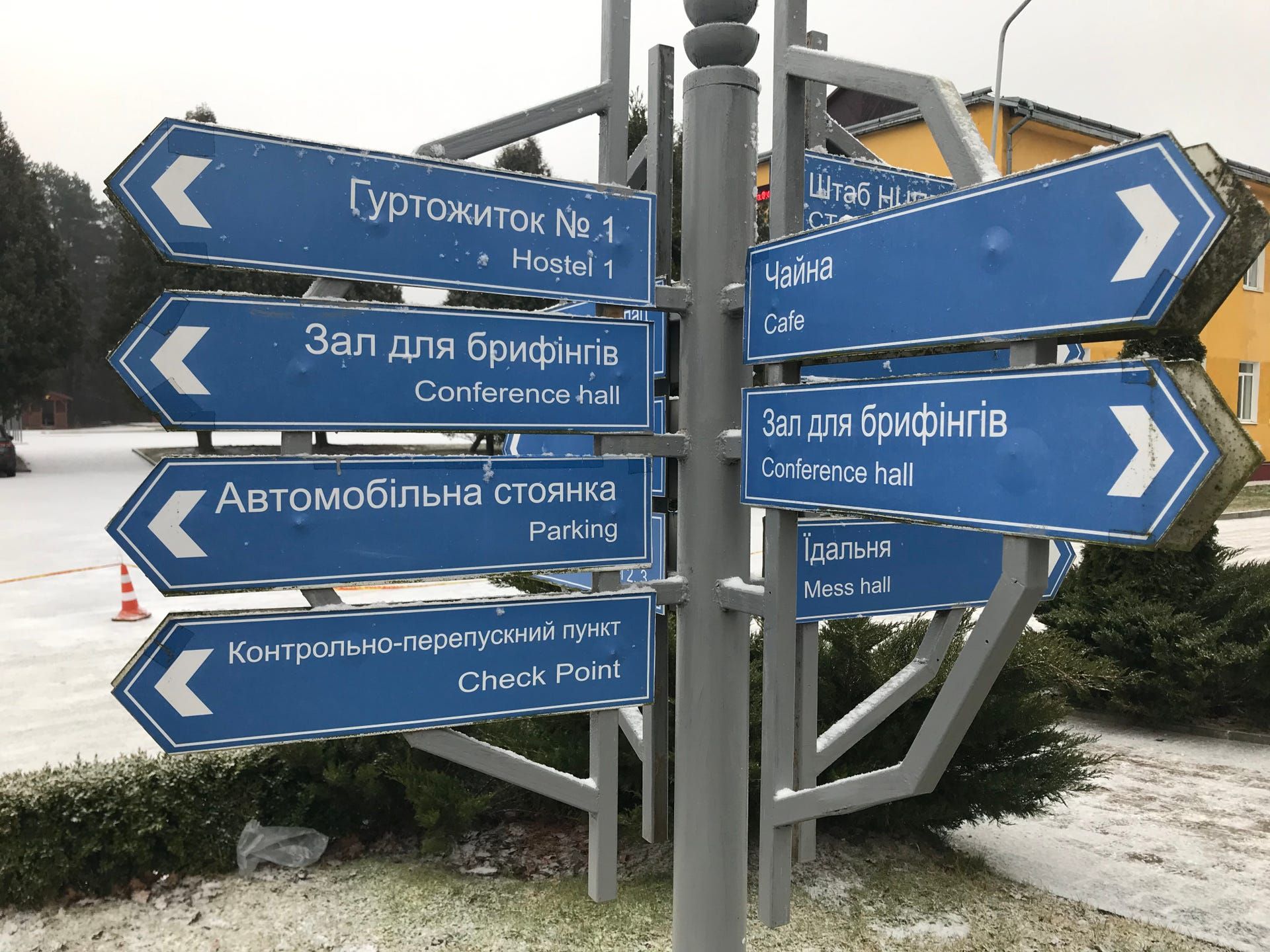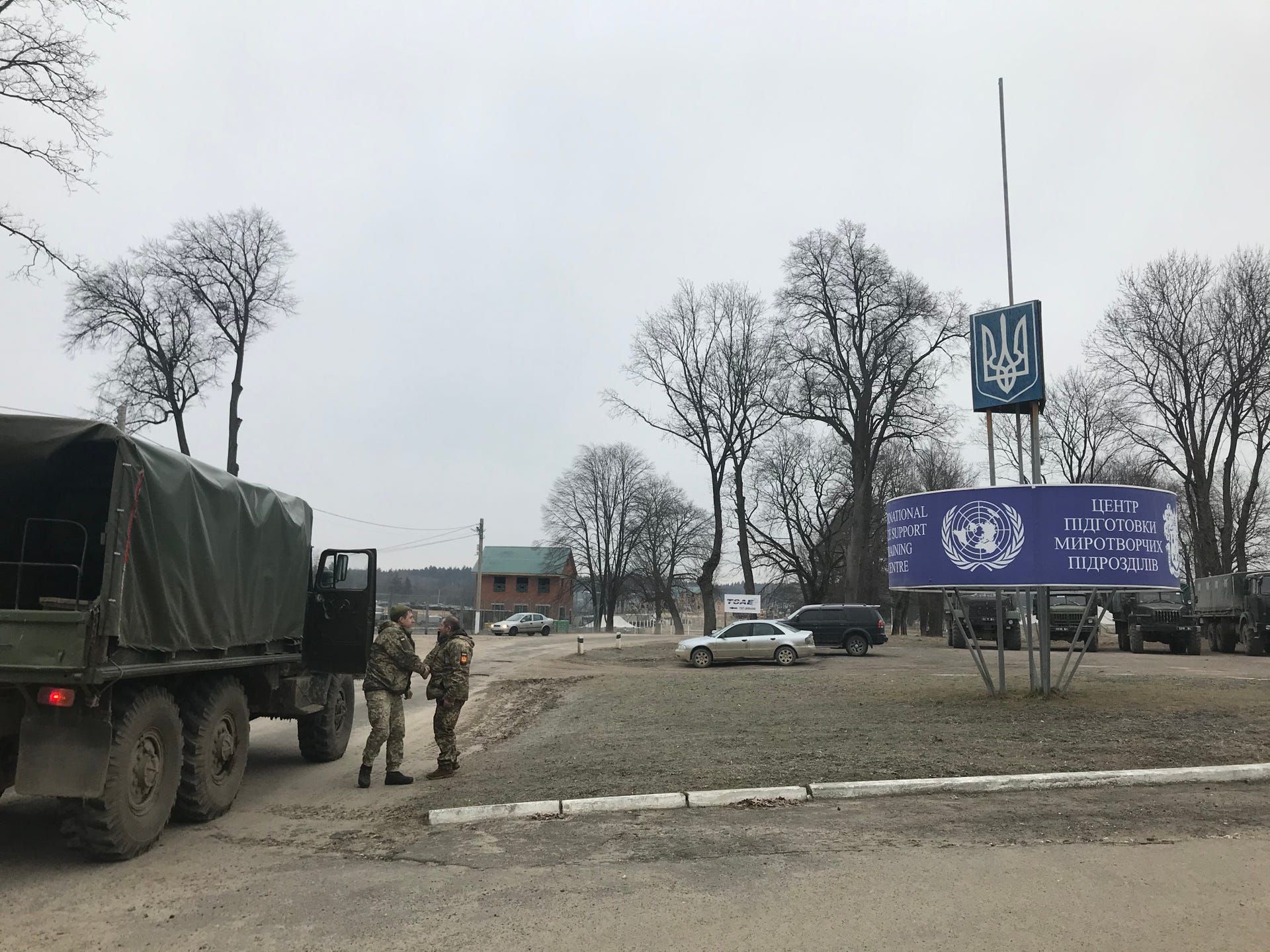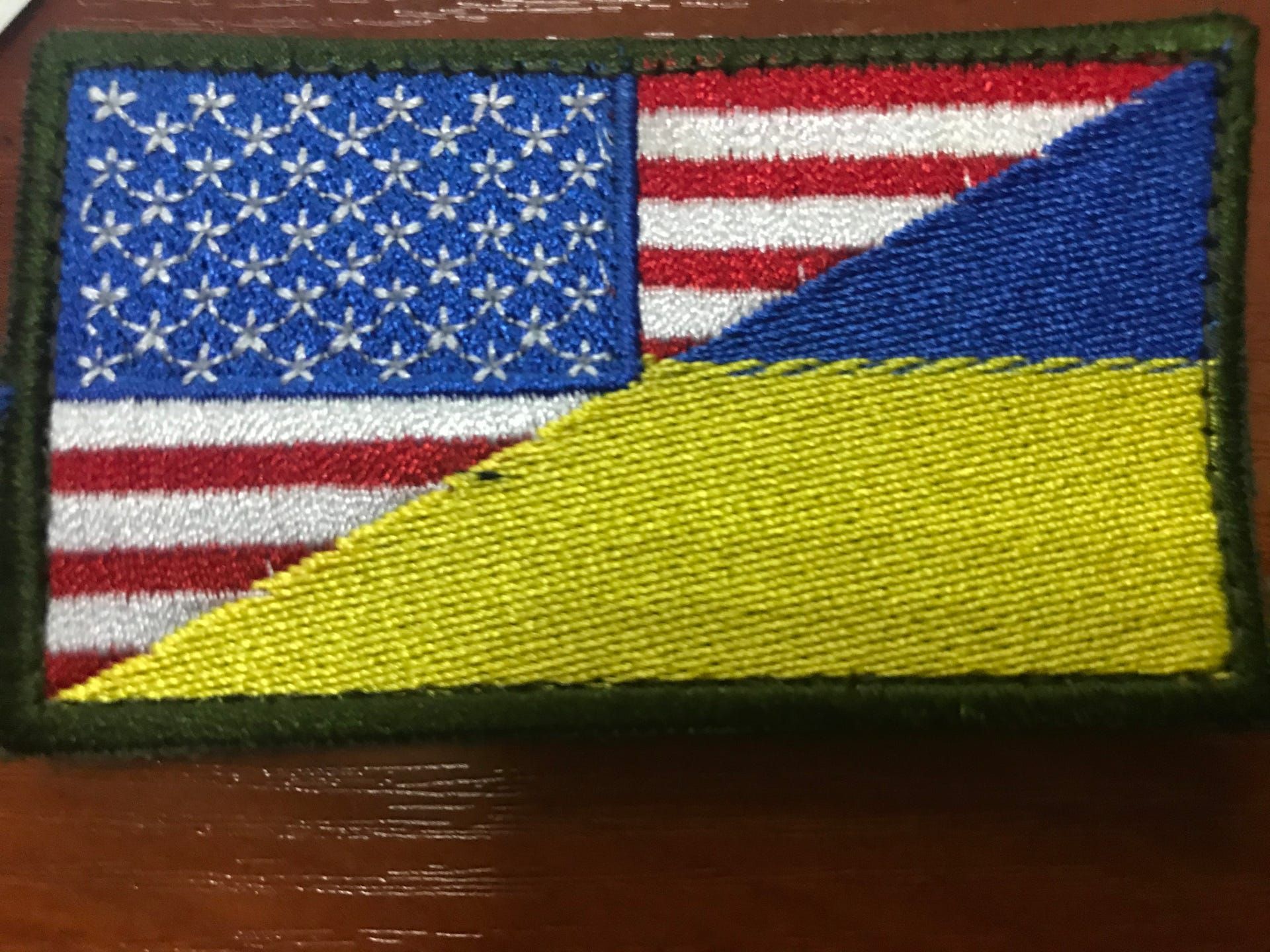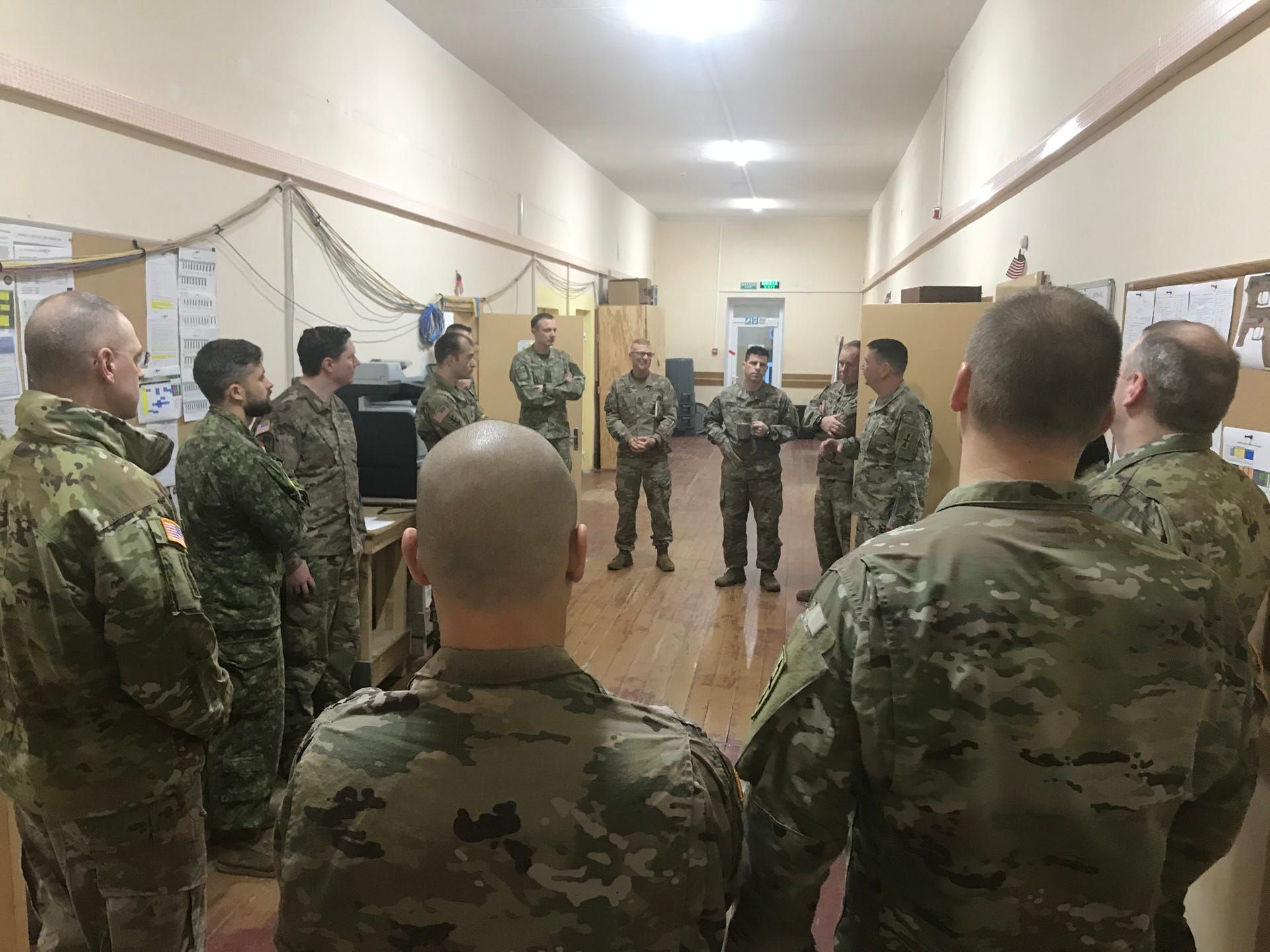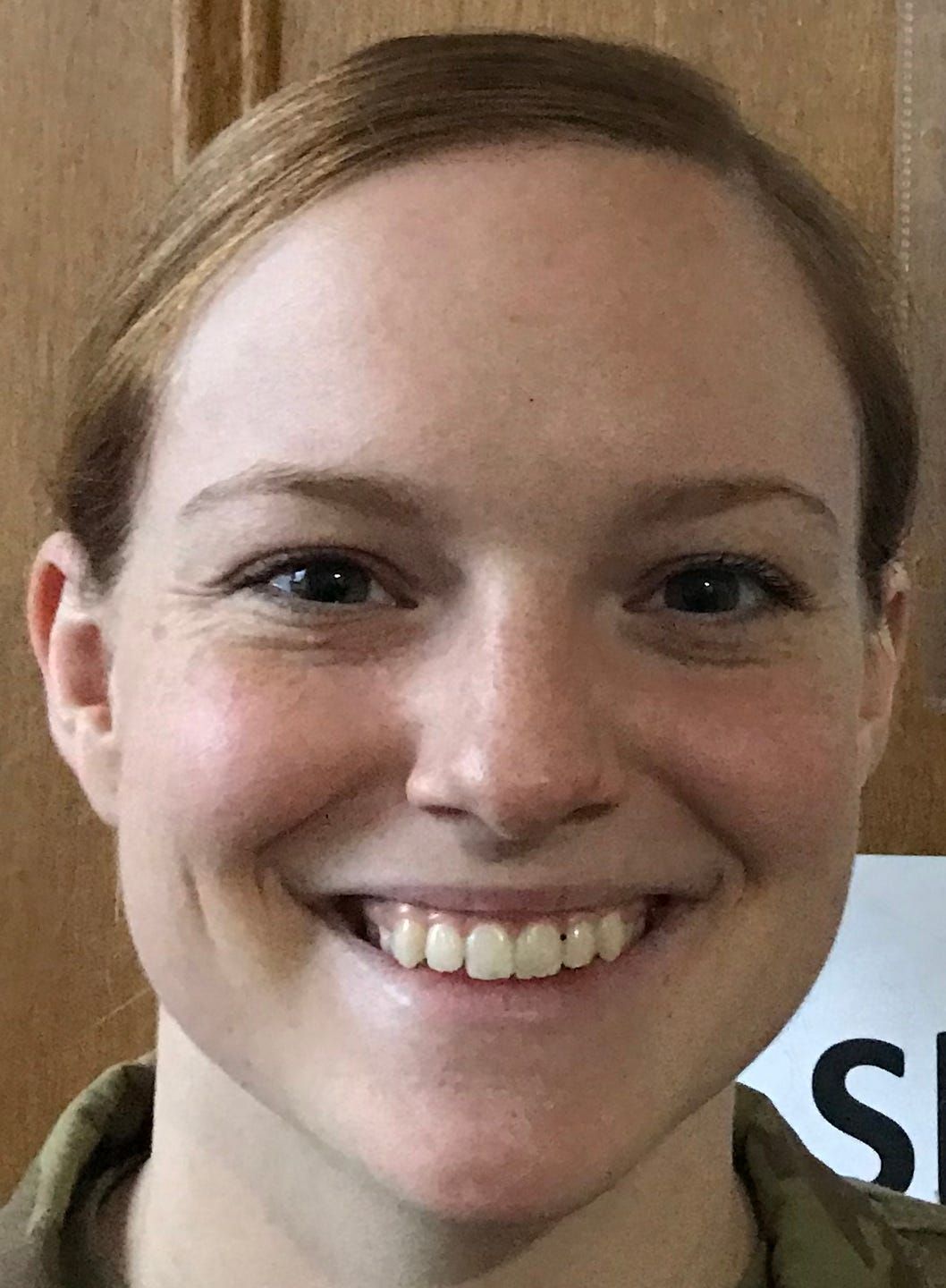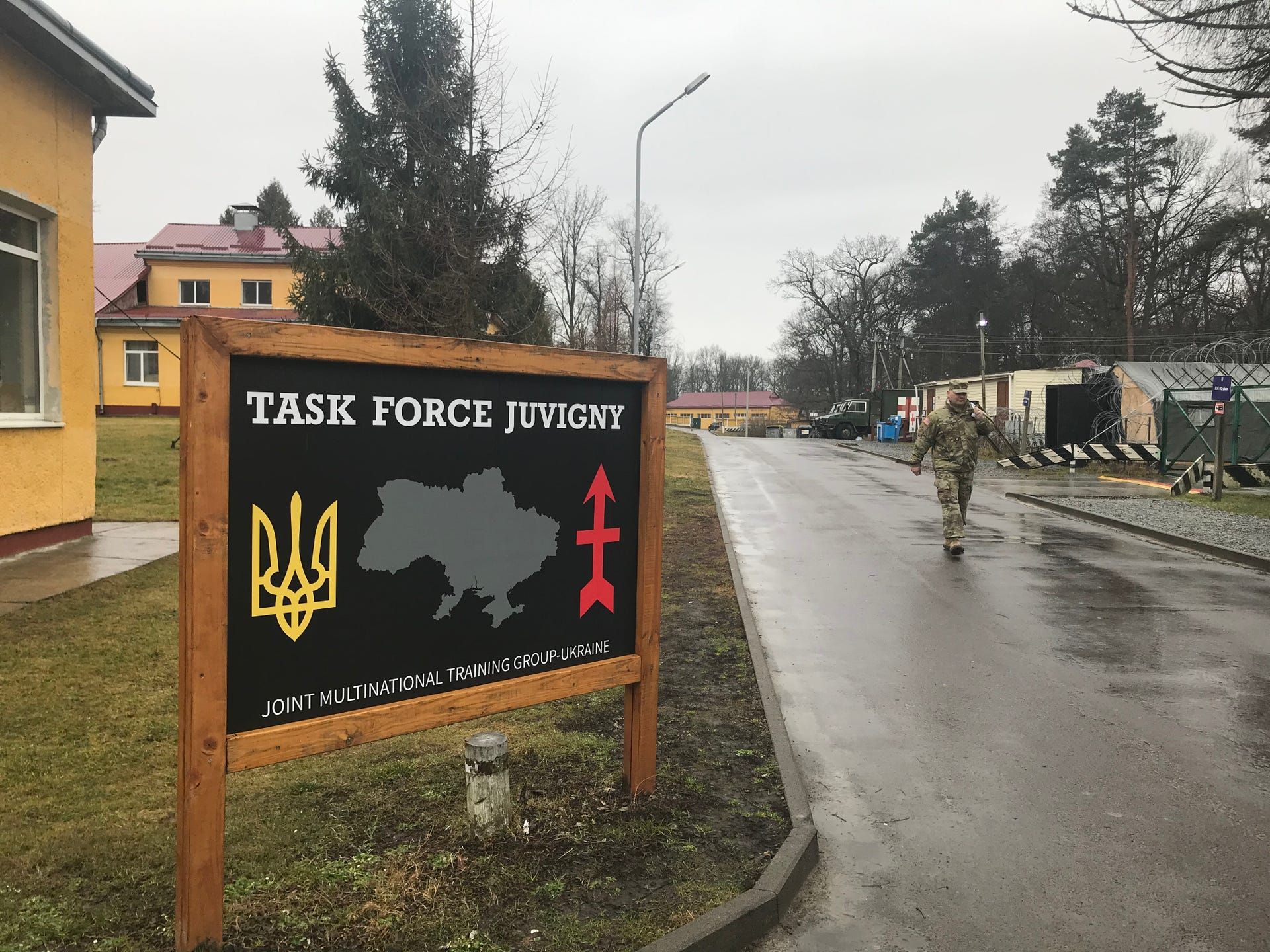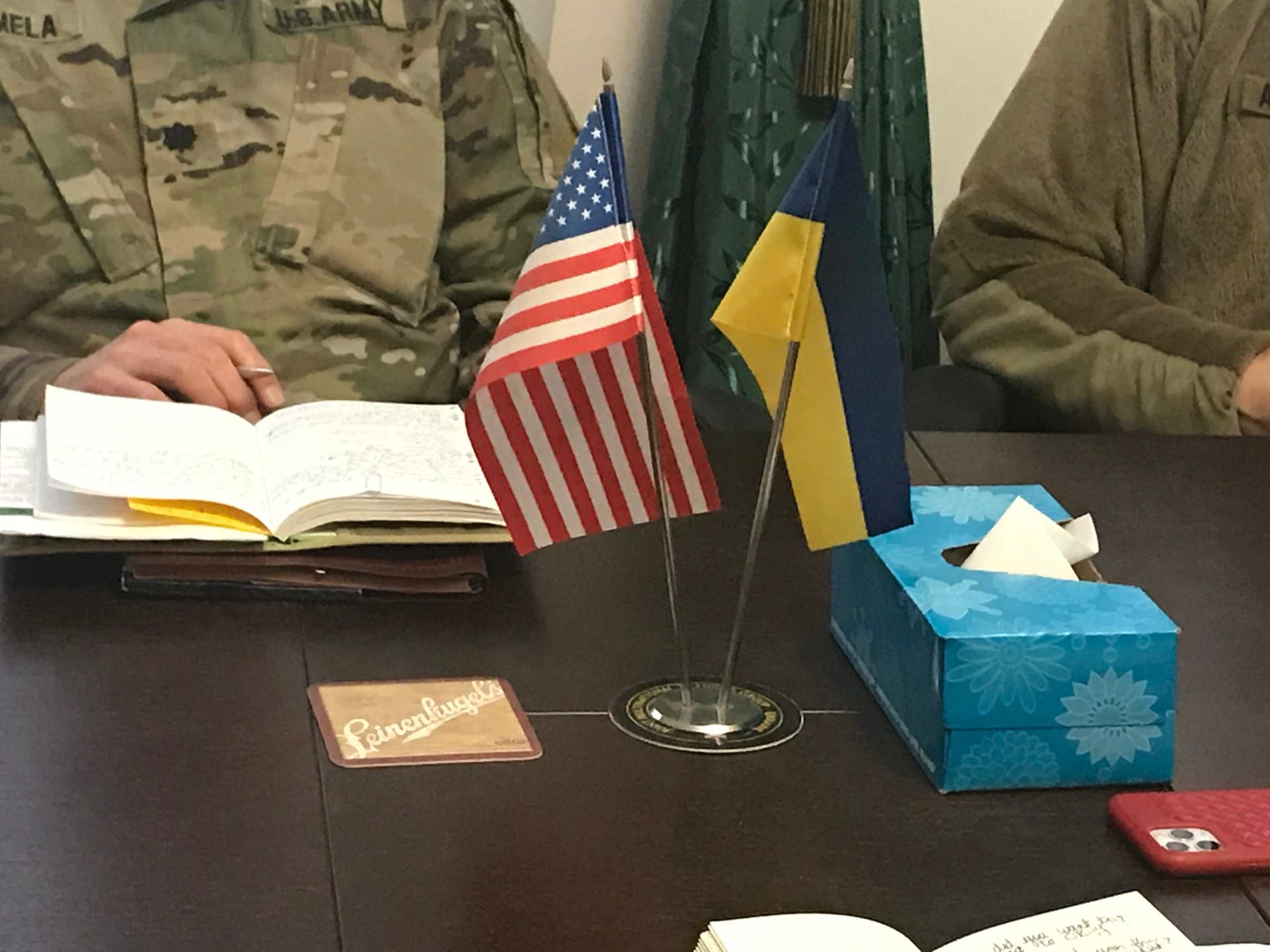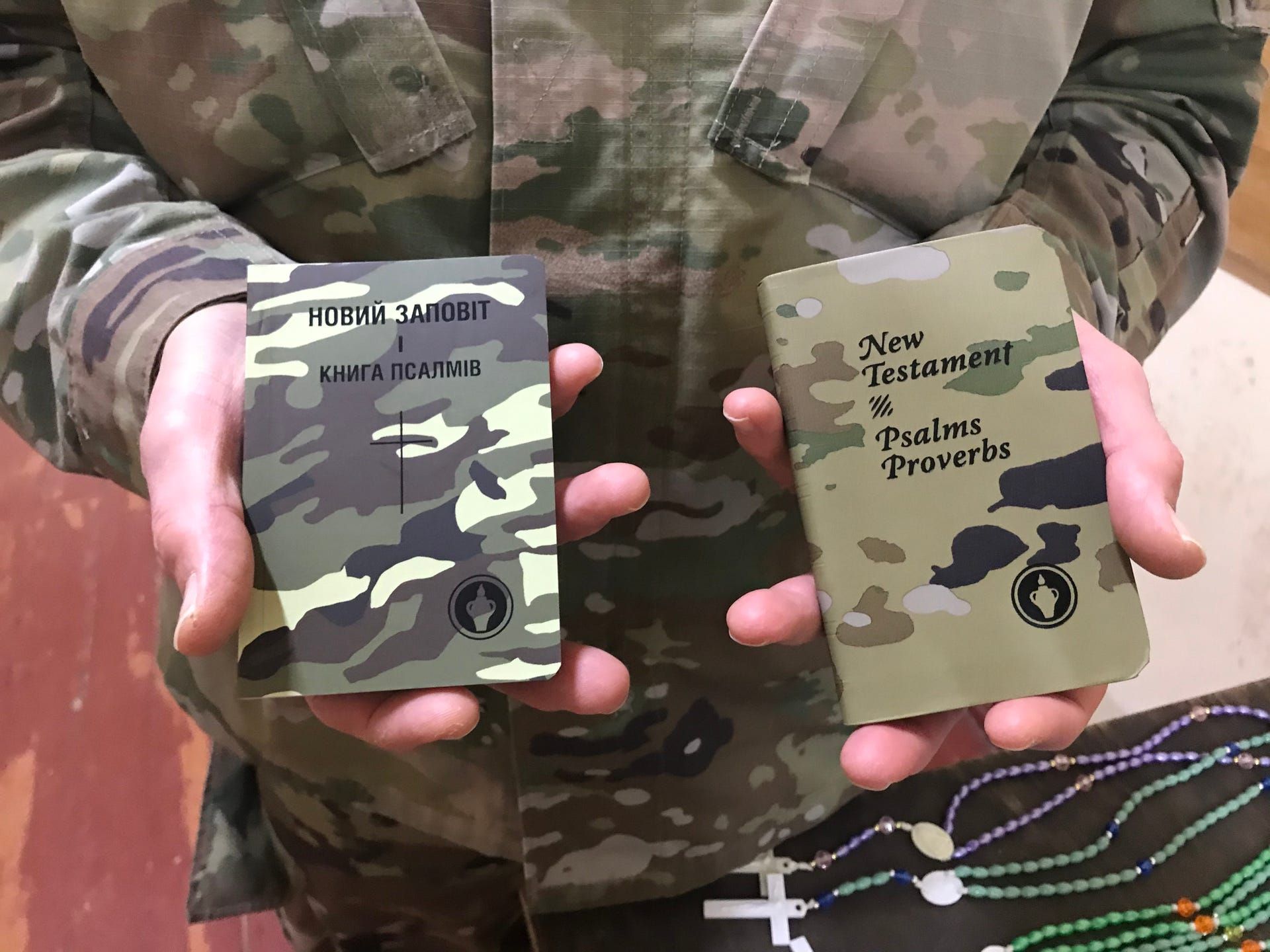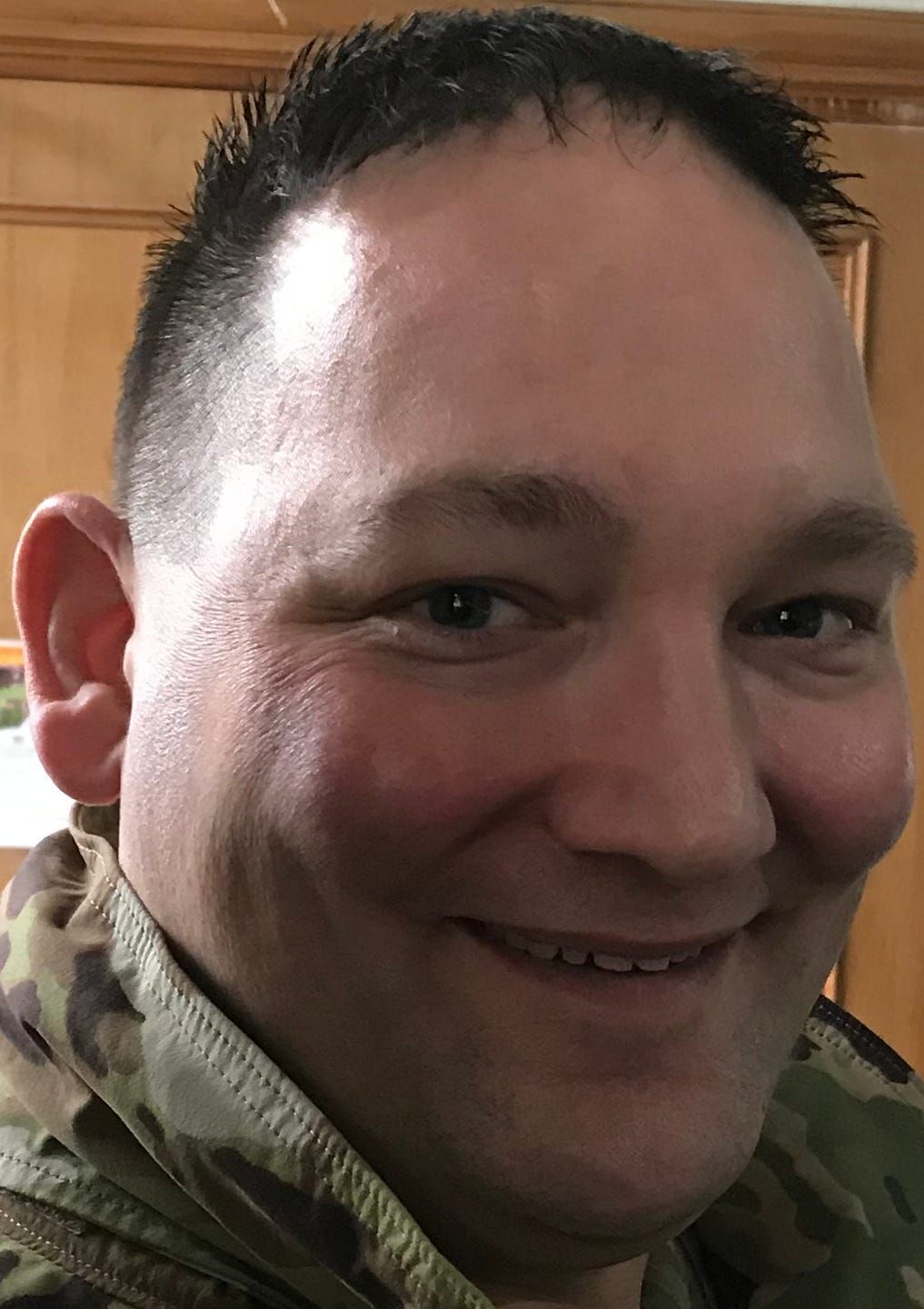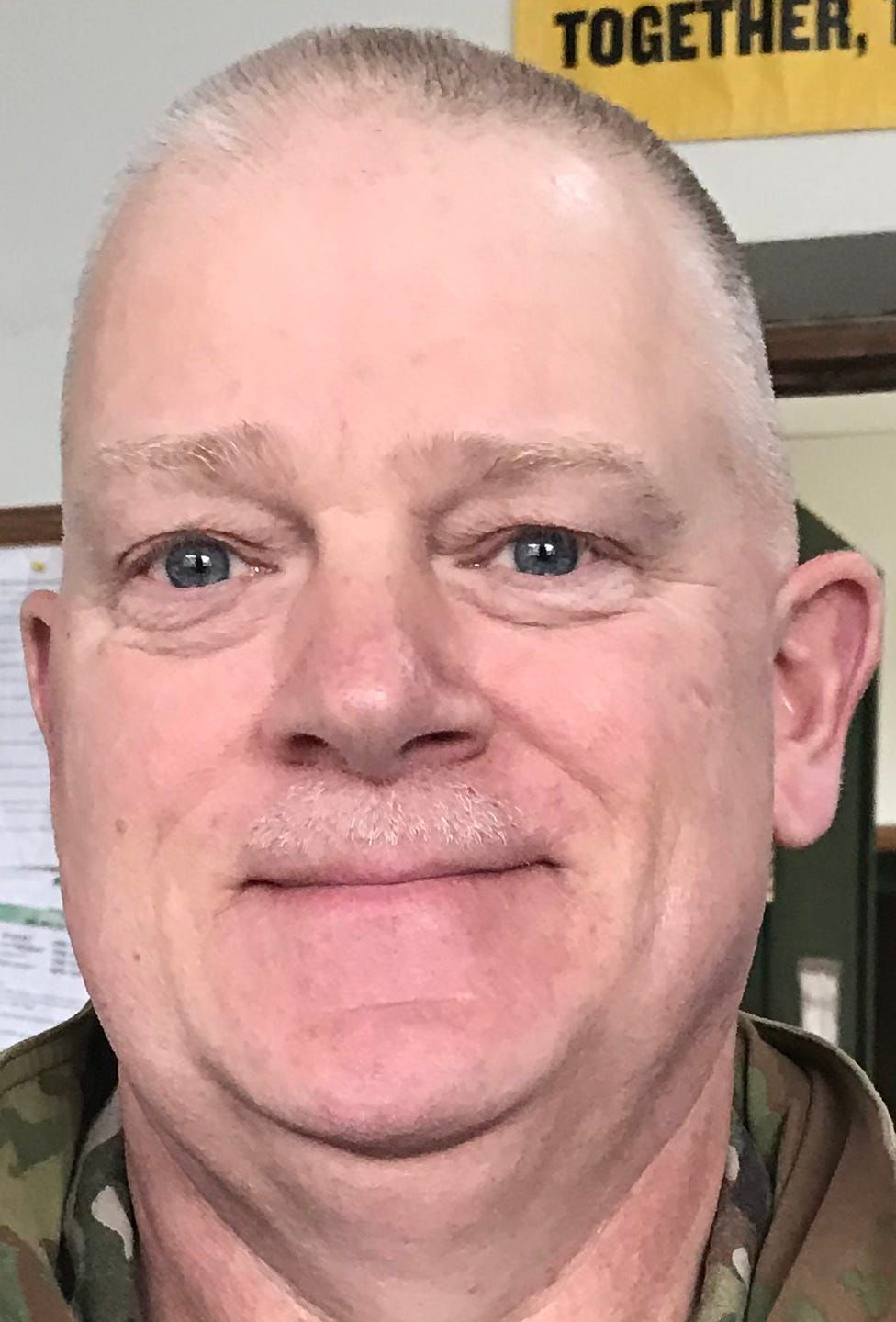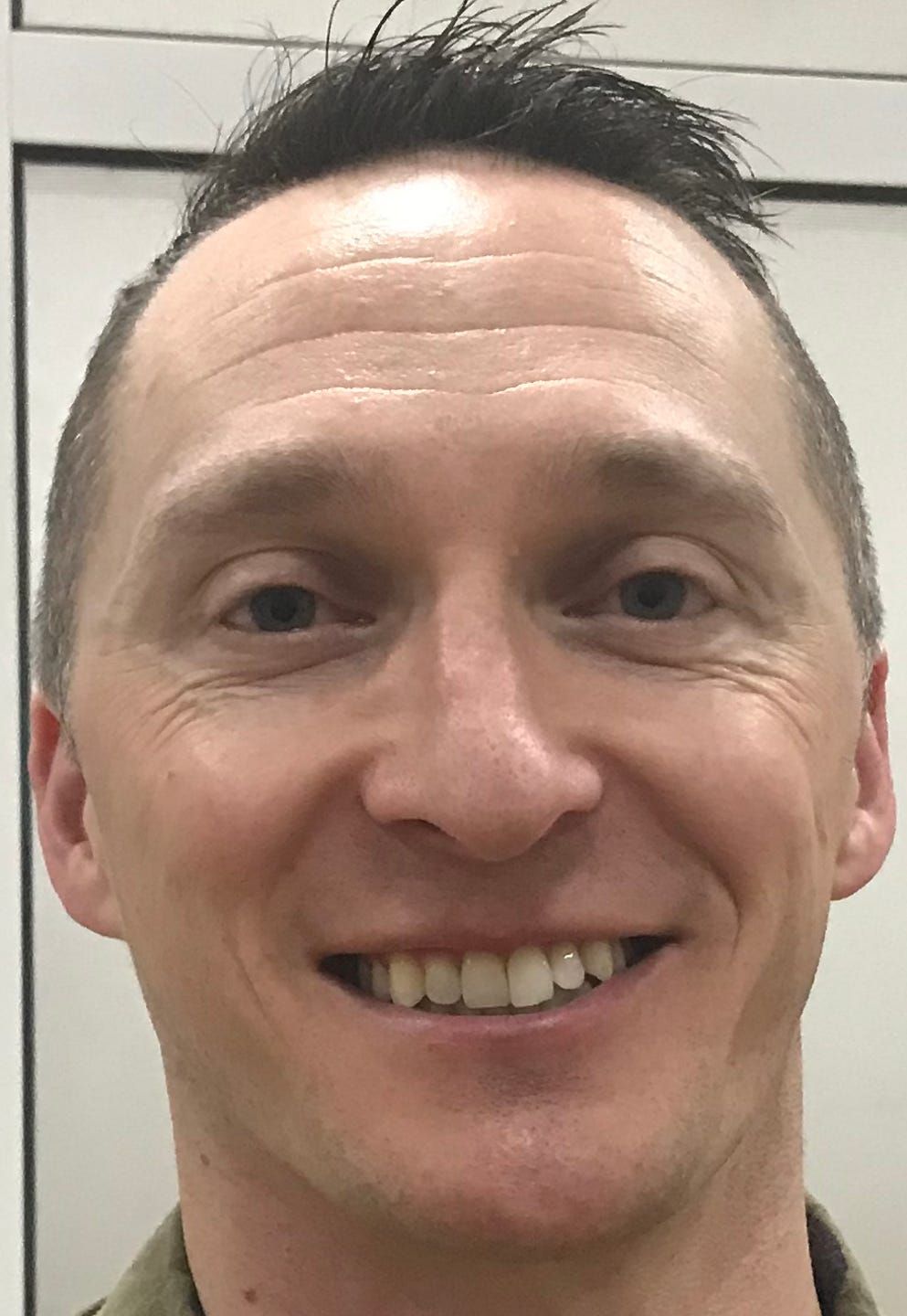YAVORIV, UKRAINE – On the day the U.S. Senate acquitted President Donald Trump of abuse of power in withholding American military aid to Ukraine in return for a personal favor, a Wisconsin National Guard unit deployed to this country calmly went about its business.
Seven time zones and 4,600 miles from Washington, D.C., 164 Wisconsin guardsmen were busy mentoring Ukrainian military trainers trying to mold troops into a fighting force battling a Russian-backed insurgency. More than 13,000 people have died in eastern Ukraine since the war began in 2014 following Russia’s invasion and annexation of Crimea.
The United States accounts for 90% of foreign military aid in Ukraine and the $391 million delayed last summer by the Trump administration is spent on a wide range of weapons and equipment as well as a training center in this small community less than 15 miles from the Polish border.
Members of Camp Douglas-based headquarters of the 32nd Infantry Brigade Combat Team arrived at the International Peace Support Training Centre on Halloween and formally took over command on Veterans Day. The Wisconsin troops are working closely with soldiers from several other countries including Canada, Poland and Lithuania.
“We’re training the trainers who train the units that are coming here to get the training. That’s amazingly convoluted. But that’s the majority of what we focus on,” said Col. John Oakley, the Wisconsin unit’s commander. “What we are doing is giving them the skill sets so they can train themselves.”
A year before Trump’s controversial July 2019 phone call with Ukraine President Volodymyr Zelenskiy, an email was sent to Wisconsin National Guard troops seeking volunteers for a deployment to the country.
About half of the Wisconsin soldiers chosen for this mission are on their first overseas deployment. Of the 164 soldiers, 27 are female. Some work full time for the Wisconsin National Guard; others have civilian jobs — electricians, teachers, students, lawyers, truck drivers, insurance agents, cable installers, corrections officers, a psychologist, TSA officer and a veterinarian. Since the majority are here as mentors, the unit includes many senior officers and NCOs.
They chose the name Task Force Juvigny as a nod to the 32nd “Red Arrow” Division’s heroism in World War I at the Battle of Juvigny in France. An Illinois national guard unit is scheduled to replace them in late summer.
They were aware of the impeachment hearings and the Senate trial, but more seemed interested in how the Packers wrapped up the season and what the weather was like back home. They didn't get many questions from Ukrainian soldiers either.
The hearings and trial were shown on Ukrainian television with simultaneous translation, and stories were featured prominently in newspapers. But Ukrainian Army Maj. Ihor Halbfinger, who commanded a reconnaissance unit before joining the Yavoriv training staff a year ago, said his country’s role in Trump’s impeachment isn’t discussed. “When it comes to me personally and the soldiers I know, I just follow Ukraine news, not U.S. news. "
Halbfinger said Wisconsin soldiers are helping his country’s troops learn critical thinking and analysis, something that wasn’t part of the Soviet system.
“Our aim is to explain the decision-making system. It’s good for us to see the advantages of the American way,” said another Ukrainian instructor, Lt. Col. Oleg Meder. “We are happy they’re here.”
A year after Russia annexed Crimea, the training center opened more than 600 miles away, in western Ukraine. American national guard or active duty units rotate in on a regular basis. It’s a sprawling facility of more than 500 square miles that looks a lot like Fort McCoy, a place the Wisconsin National Guard troops know well.
Except for signs written in Ukrainian and English, it’s the same type of terrain and buildings used for urban combat training in Wisconsin. There are similar platforms to observe live-fire exercises. The booming sound of artillery can be heard throughout the day. Rows of tanks, trucks and armored personnel carriers are parked in fields — though, of course, they’re not American, but Russian-manufactured vehicles.
Different models of command
Wisconsin soldiers are split into groups of mentors. Those mentors then are assigned to Ukrainian military trainers who are handling instruction at company, battalion and brigade levels. The Ukrainian units rotate in for 55-day courses that include classroom instruction, war games in a simulation center and field exercises. The U.S. mentors observe the interactions and quietly make suggestions and recommendations.
Though Ukraine gained independence in 1991 with the breakup of the Soviet Union, some of the Ukrainian military commanders are old enough to have served in the Soviet military. Ukraine’s army is still based on the top-down, commanders-make-all-decisions, Soviet model.
That’s neither how the American military operates, nor how NATO operates. A major part of the training center work involves shifting to the American methods, in which commanders work with staffs and junior officers have the independence to command troops.
“The biggest difference from the old Soviet-style is the commander is the decider, the key figure in everything that goes on. There really isn’t a staff so there’s not a group of people who work on issues for the commander. The commander is expected to know all of those things and to make decisions on all of those things,” said Oakley, who lives in Appleton.
If Ukraine someday wants to join NATO, its military must operate in the western style model of warfare, working together with other NATO allies who have all been trained the same way.
It’s not easy to change decades of training and military thinking. The U.S. method of pairing senior enlisted soldiers with officers is not part of the Ukrainian military mindset. Instead of relying on senior noncommissioned officers (NCOs) like first sergeants and sergeant majors to work closely with captains, majors and other officers, Ukraine’s army NCOs are relatively young, poorly paid and tend to leave when their enlistment is up or get shifted to the officer corps, said Command Sgt. Maj. Joel Rothbauer.
To address the shortfall in experienced NCOs, Wisconsin troops and coalition forces are scheduling NCO courses for incoming Ukraine units.
“But it’s going to be a long road for them because they don’t understand the importance of the NCO, especially at the senior level,” said Rothbauer, a Chippewa Falls resident who served two tours of Iraq.
'The ideal is to work together'
A day after closing arguments in the impeachment trial, Ukrainian soldiers in a mechanized unit crowded around a map in a room in the simulation center. Small pieces of paper colored red (enemy) and blue (friendly) were moved around the large map as Ukrainian commanders talked, with their Ukrainian trainers listening and occasionally interjecting thoughts.
On the other side of a partition, Wisconsin and Lithuanian mentors quietly watched and adjusted earpieces to listen to the Ukrainian conversation translated by interpreters.
Among them was Maj. Orrin Viner, who lives in Madison.
“The idea is the staff is working together. Sometimes it gets adversarial, like a board game, but the idea is to work together,” said Viner.
“How they’re set up here is exactly how we’d do it at home. We’re observing the instructors — how involved are they? If the soldiers get off track, does the instructor get them back on course?”
1st Lt. Bryce Edwards of Lake Mills recalled watching Ukrainian soldiers training for urban warfare, learning how to clear insurgents from houses. American soldiers are taught to stay very close to each other for safety and firepower. Edwards noticed the Ukrainian troops were farther apart.
Edwards, a 2012 UW-Whitewater ROTC graduate who was a cultural exchange student in Ukraine, told the instructor how the U.S. clears homes and a short time later noticed the Ukrainians were being taught to move closer together.
Wisconsin soldiers have been heartened by the enthusiastic response to their presence.
'Ukraine wants us here'
Capt. Craig Moline, a chemical warfare specialist who lives near Green Bay, deployed to Afghanistan with a Wisconsin National Guard agribusiness team trying to help Afghans improve farming techniques.
“Ukraine wants us here, they want to learn, they want our advice. In Afghanistan, they just wanted our money,” said Moline.
There are regional and local training centers in Ukraine, but the facility in Yavoriv is a unique and valuable training opportunity, said Maj. Rhett Zietlow, from Green Bay, the lead adviser to the brigade level trainers of Ukraine forces.
Many of the Ukrainian troops coming through the International Peace Support Training Centre are either combat vets or soldiers who will eventually be sent to fight in eastern Ukraine. That gives the training an extra edge and importance.
“It’s known. It’s understood. Everyone feels the gravity of why what you’re doing is so valuable,” said Zietlow, director of sales for an Appleton recruiting firm who deployed to Afghanistan in 2003 and Iraq in 2009-10.
Chris Finbow, a Canadian army captain who works on a team with Wisconsin troops mentoring at the battalion level, noted that some of the soldiers and officers they see at the training center come from the region that has been at war for six years.
“These people are fighting in cities where they grew up, where they raised their kids and are probably fighting against the same people they lived with as neighbors,” said Finbow.
Training chaplains as well
It’s not just battle tactics Wisconsin soldiers are imparting. The unit’s chaplain, Lt. Col. Clay Salmela of Ripon, is working with Ukrainian military chaplains to help them learn how to minister to their flocks in uniform.
Because there were no chaplains in the Soviet army, there's really no counterpart to America’s military chaplain corps in Ukraine, which until recently relied on unpaid volunteer priests. In the last few years, Ukraine has seen the need for instituting a formal chaplain corps with paid chaplains in uniform assigned to units.
Salmela has worked with four Ukrainian military chaplains since he arrived in November, including two who deployed to the war zone right before Christmas, answering questions about the chaplains’ role in the care of soldiers and their families, suicide prevention, counseling and how to handle military funerals.
“The chaplains are very interested in our structure. (They ask) ‘How do you work on a staff? What are your responsibilities? How do you work with a commander?’ ” said Salmela, who joined the Wisconsin National Guard in 2008.
The American military is in the process of compiling a chaplain battlefield handbook to be translated into Ukrainian for use in training chaplains. Salmela is also busy counseling Wisconsin soldiers, scheduling religious services and teaching English classes at local schools with volunteers from his unit.
But getting a chance to train another army’s chaplain corps has also been very rewarding, said Salmela, pastor of Grace Lutheran Church in Ripon since 2011.
“It’s nice to have an attentive audience,” Salmela said of the Ukrainian chaplains. “I teach confirmation classes back home and they’re not always attentive.”
A complicated history
Ukraine is a land that has changed rulers many times during its long history, but the reason Wisconsin troops are here dates back to revolutions that happened in late 2013 and early ’14.
Russia has always seen Ukraine as its own backyard and sphere of influence, said University of Wisconsin-Madison political science professor Yoshiko Herrera. When Ukraine considered having a relationship with the European Union, though not joining the EU, President Vladimir Putin and other Russian officials got nervous.
It’s a big country, considered the “breadbasket” of the former Soviet Union because of its agricultural economy, with a large population of Russians living in the eastern end of Ukraine who speak Russian — in contrast to those in the western region, who generally speak Ukrainian and Polish. Very broadly speaking, eastern Ukraine aligns more with Russia while western Ukraine is more European-centric.
Nikita Krushchev, famous in the U.S. for banging his shoe on a desk at the United Nations, spent a decade in Ukraine as the Communist Party secretary until 1949. Five years later, Krushchev, who by then had risen to the USSR Communist Party’s first secretary, signed paperwork transferring Crimea from Russia to Ukraine.
“At the time it didn’t seem like a big deal. It was like (Michigan’s Upper Peninsula). If somebody said ‘We’ll give the UP to Wisconsin,’ it wouldn’t change that much. It’s still part of the United States,” said Herrera, an expert on politics in Russia and the former Soviet states and former director of UW’s Center for Russia, East Europe and Central Asia.
“It was still part of the Soviet Union and nobody foresaw the end of the Soviet Union. It was seen as an administrative thing.”
But when the USSR broke apart, people living in Crimea became Ukrainian and not Russian citizens, something that irked many in Russia, Herrera said.
In late 2013 then-Ukrainian President Viktor Yanukovych planned to sign an agreement with the EU but at the last minute decided not to — a decision Herrera said was likely at Putin’s urging. That prompted protests in Ukraine.
Putin and Russian officials also worried that Ukraine could follow Baltic states that joined anti-Russian NATO, Herrera said.
As protests mounted in Ukraine, Yanukovych fled to Russia along with many of his ministers on Feb. 22, 2014, while millions of people were watching the Winter Olympics in Sochi, Russia. Five days later, Russian special forces seized government buildings in Crimea and eventually Russian-backed Crimean separatist militias moved in.
The following year the training center in Yavoriv opened. Since 2015, America has given Ukraine more than $1.5 billion in equipment and aid, a way for the U.S. to support a country invaded by Russia but without actually starting a war with Russia.
“There’s always been a debate in the U.S. over how much and what kind of military aid to give Ukraine. We don’t want Russia invading European countries but we also don’t want war with Russia,” Herrera said. “Sending people to the far western part of Ukraine for training is a moderate step.”
For Oakley and Rothbauer, who joined the military in the mid-1980s when the U.S. focused on training for a possible World War III with the Soviets, it’s a strange turn of events in their careers.
“Who would ever have thought that now we have (U.S.) troops in Romania and Georgia and Ukraine and Poland and Latvia? And that we’re working with the Polish and Lithuanian soldiers. That was unthinkable when I joined,” said Oakley, who has served 36 years in the military.
Rothbauer, a 35-year Wisconsin National Guard veteran, agreed. “I never thought we’d be full circle. But it is quite rewarding to see that we’re working with all these other nations, trying to build them up and be allies.”
